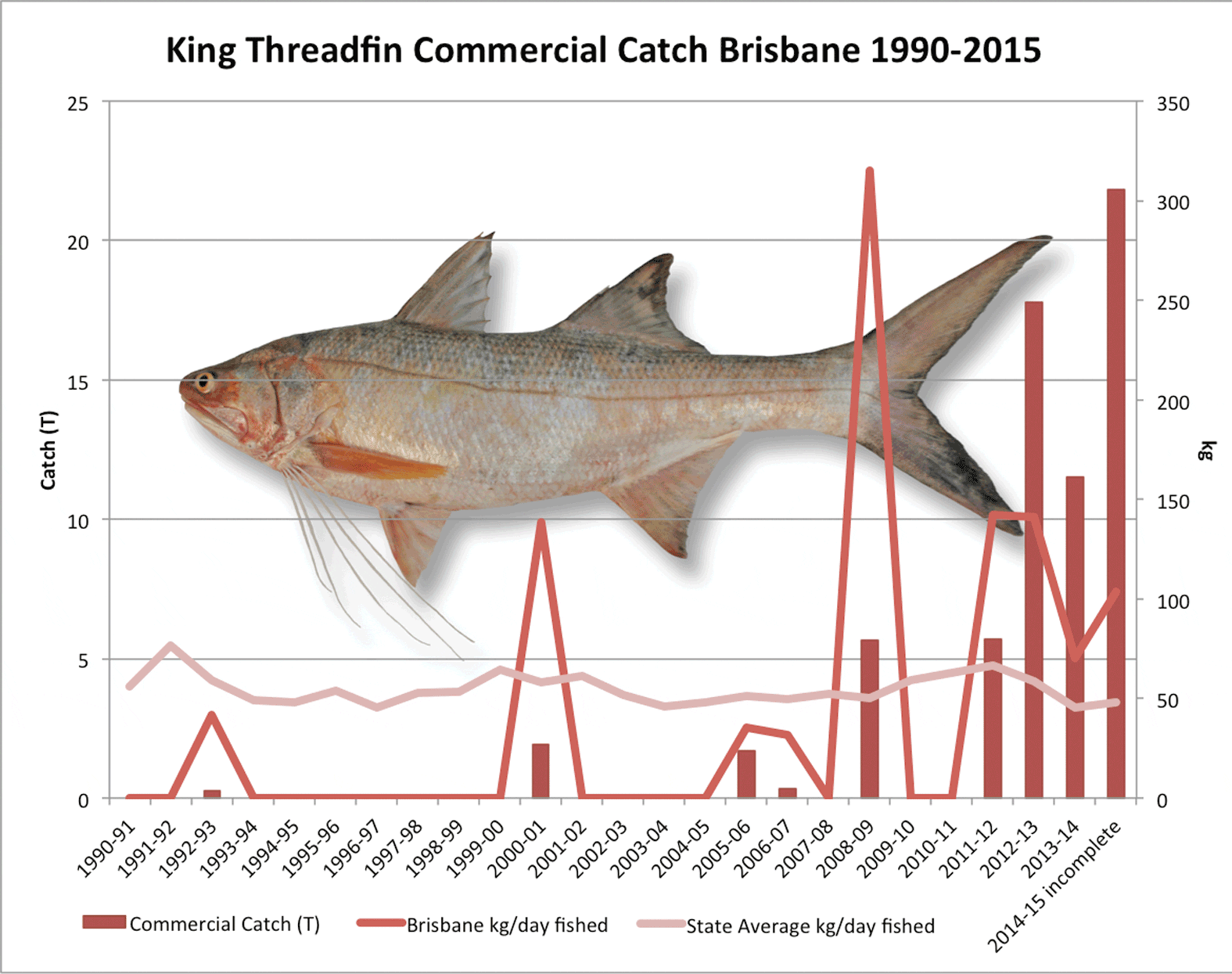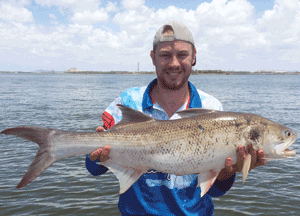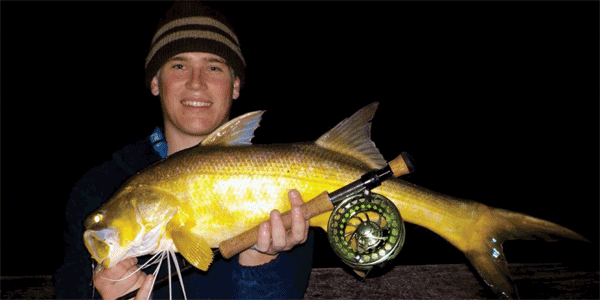STOCKS of king threadfin in the Brisbane River are at risk of serious decline.

There has been limited evidence of strong spawning to refresh stocks, and heading into El Nino there is a lower chance of successful spawning. Mathew Hubbard from Brisbane River Fishing was the first to raise alarm bells, having observed commercial fishers fishing around Nudgee. Mathew posted photos on Facebook of threadfin being taken from the river, generating a lot of discussion and in the process reaching nearly 76,000 people.

Infofish Australia has been monitoring the commercial catch for over a year but with a dip in the 2014 catch it wasn’t clear the take was too high until April/May this year. To March, Brisbane was the second-largest king threadfin fishery in the state. A meeting on July 15 was attended by many Brisbane fishers and highlighted the need for urgent action in order to avert an inevitable decline.
The real problem isn’t the commercial fishing so much as the absence of an early warning system to provide a buffer against such problems. Crystal Bowl in central Queensland serves this purpose and efforts are under way to develop a Crystal Bowl in Brisbane, but it is still early days.
The Brisbane River is a unique recreational fishery in that the major predators, being snapper, king threadfin and mulloway are catch and release targets for the majority of fishers. The age of fishers is also much younger than most other river systems. It’s no coincidence that the dominant Generation Y fishers are favouring Facebook over the dinner plate.
King threadfin is a fast-growing species, reaching about 90cm within five years and making them a very attractive sportfish. With the emphasis on photos for Facebook, the locals have a renewable resource that drives regular spend.
With no other major populations nearby, in the past, Brisbane fishers have often travelled to Maryborough, Rockhampton or Cape York for a threadfin fix.
Suntag in partnership with local businesses is driving the effort to collect data, increasingly having to use its own funding to do so. In 2014/15, recreational businesses donated over $65,000 in time and materials to monitor the Brisbane region.
Through that effort, it is hoped that in future such issues can be detected early enough that conflict between sectors and rapid wind-ups of fishing effort are avoided.
For more information, contact Infofish Australia manager Stefan Sawynok on 0409 811 511 or Mathew Hubbard, Brisbane River Fishing through Facebook.
 Bush ‘n Beach Fishing Magazine Location reports & tips for fishing, boating, camping, kayaking, 4WDing in Queensland and Northern NSW
Bush ‘n Beach Fishing Magazine Location reports & tips for fishing, boating, camping, kayaking, 4WDing in Queensland and Northern NSW









